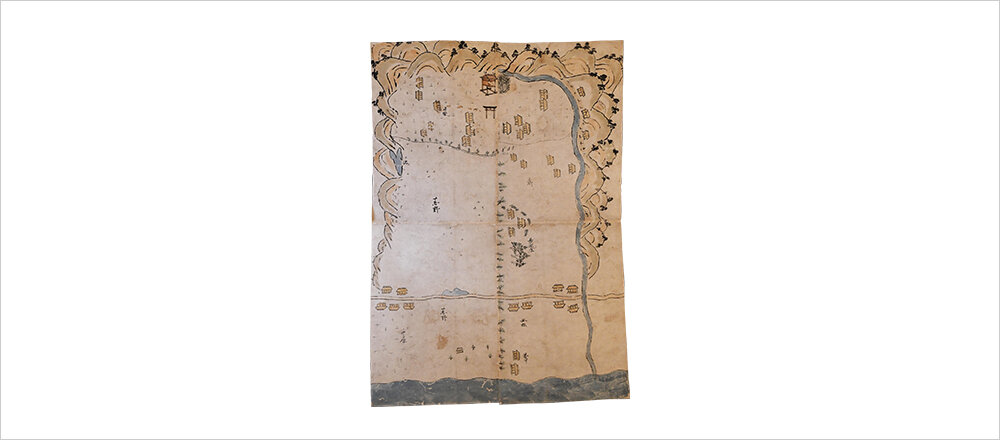Painting of Wilderness Cultivation in Hineno Village and Ihara Village, Hinenosho, Izumi Province
A painting created around 1310 depicting Hineno Village and Ihara Village in the estate of the Kujo family.
One of the sources of the story of Hinenosho, it shows a lush, green landscape with shrines, temples, and other buildings.

This painting of the area around the Hinenosho manor was passed down in the Kujo family archives. It is believed to have been created in the early 14th century. Although the date of its creation is uncertain, it is thought to have been created to show the locations of the wildernesses in Hinenosho’s Hineno Village and Ibara Village at the time of their cultivation in 1310, prior to the Painting of Wilderness Cultivation in Hineno Village, Hinenosho, Izumi Province.
Although the painting makes use of symbolic iconography, comparison with the Painting of Wilderness Cultivation in Hineno Village, Hinenosho, Izumi Province reveals that the shrine building with a torii gate is “Oiseki Daimyojin” (now Hine Jinja Shrine), the three buildings with fences are the Zenkoji temple, the three pine trees near “Nagataki no Sho” are “Anatoshisha” (now Aritoshi Jinja Shrine), and the heart-shaped pond is “Jujitaniike” (now Junidaniike Pond). The row of trees bisecting the center of the map vertically is believed not to be the approach to the Oiseki Daimyojin shrine but rather a symbolic representation to demarcate the area where the wilderness exists.






